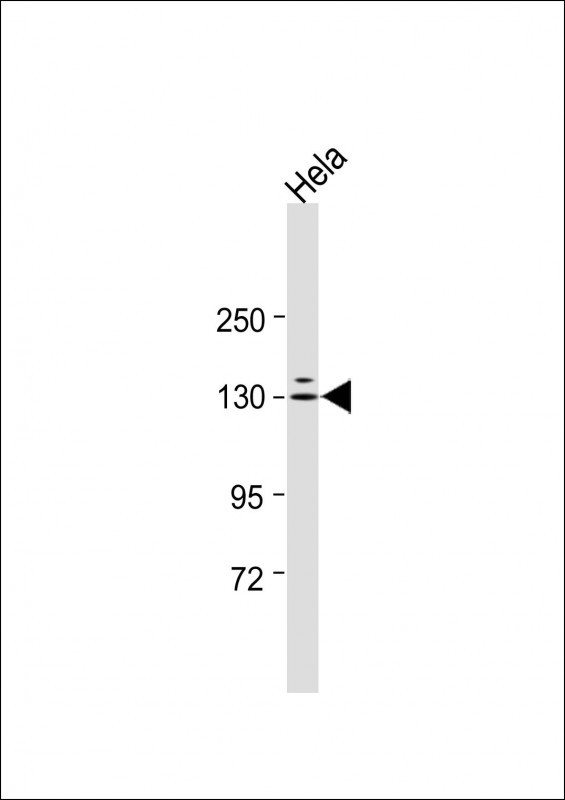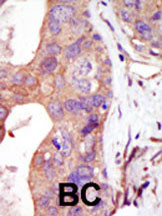PRK2 Rabbit Polyclonal Antibody (C-term)
产品基本信息

All lanes : Anti-hPRK2-E640 at 1:2000 dilution Lane 1: Hela whole cell lysate Lysates/proteins at 20 µg per lane. Secondary Goat Anti-Mouse IgG/A/M(H/L), Peroxidase conjugated at 1/2000 dilution. Observed band size : 130kDa Blocking/Dilution buffer: 5% NFDM/TBST.

Western blot analysis of anti-PRK2 Pab in placenta lysate. PRK2 (arrow) was detected using purified Pab. Secondary HRP-anti-rabbit was used for signal visualization with chemiluminescence.

Formalin-fixed and paraffin-embedded human cancer tissue reacted with the primary antibody, which was peroxidase-conjugated to the secondary antibody, followed by AEC staining. This data demonstrates the use of this antibody for immunohistochemistry; clinical relevance has not been evaluated. BC = breast carcinoma; HC = hepatocarcinoma.
相关文献
产品问答
相关产品

市场:027-65023363 行政/人事:027-62439686 邮箱:marketing@brainvta.com 客服:18140661572(活动咨询、售后反馈等)
销售总监:张经理 18995532642 华东区:陈经理 18013970337 华南区:王经理 13100653525 华中/西区:杨经理 18186518905 华北区:张经理 18893721749
地址:中国武汉东湖高新区光谷七路128号中科开物产业园1号楼
Copyright © 武汉枢密脑科学技术有限公司. All RIGHTS RESERVED.
鄂ICP备2021009124号 DIGITAL BY VTHINK